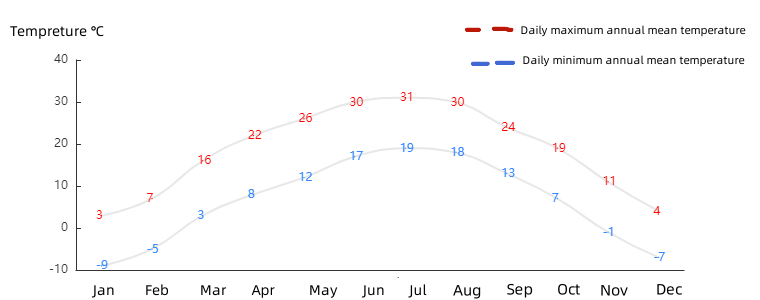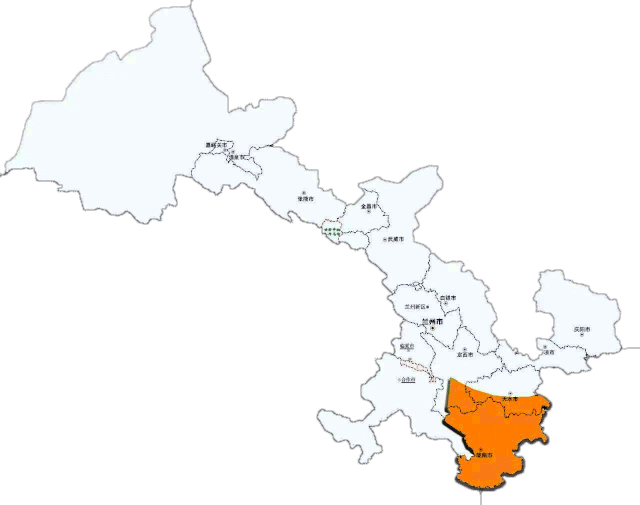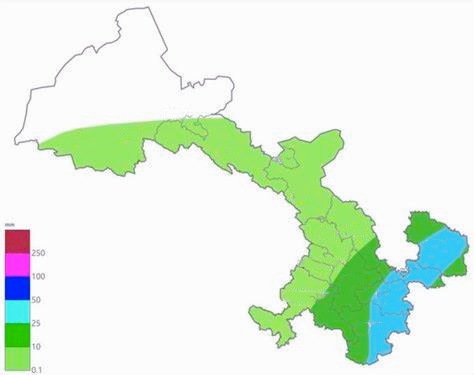Gansu Province is located inland, the terrain is complex, and the climate is diverse in Gansu. The climate types in Gansu include temperate continental climate, plateau mountain climate, temperate monsoon climate, subtropical monsoon climate, showing the characteristics of arid and semi-arid climates as a whole. The weather in Gansu province is affected by terrain, latitude, and season, showing obvious seasonal and regional characteristics.

Annual mean temperature variation in Gansu
Spring in Gansu is generally from March to May. When spring comes, the temperature gradually rises, but it is still dry and windy, and sandy weather is frequent. Spring is the period when the climate in Gansu gradually warms up. However, due to the high terrain in most parts of Gansu, the temperature difference between day and night is large, and the temperature fluctuation in spring is obvious. In the early spring, the western and southern parts of Gansu may still have snow or rain and low temperatures, while the eastern and northern parts of Gansu begin to warm up gradually, and plants gradually draw out new buds. Gansu is also vulnerable to strong winds and sandstorms in spring, especially in the Hexi Corridor, where dust and sand weather are more frequent. The chart below shows the sequence of spring in different regions of Gansu.

Sequence of Spring in Different Regions of Gansu
Summer weather in Gansu is changeable and unique. In the early summer, the temperature in Gansu gradually rises, the day is clear, the sun is shining, and the temperature gradually rises, often more than 30℃, and sometimes even reaching more than 40℃, people feel the hot summer breath, accompanied by sandstorms. However, with the deepening of summer, there are often thunderstorms in Gansu, especially in mountainous areas and river valleys, thunderstorms occur, the temperature drops sharply, and the climate is changeable. Gansu in summer, is both hot and dry, but also a rainy and thundery side, change, so that people need to be ready for the weather changes at any time.
Autumn is the most pleasant season in Gansu, with moderate temperatures, but it is also prone to insufficient precipitation. Autumn temperatures are moderate, the sky is blue, and autumn is crisp. Gansu's picturesque scenery in autumn, especially the Danxia landform and Danxia Mountain, is colorful, attracting many tourists. However, due to the lack of precipitation in most parts of Gansu, it is also prone to drought in autumn.
Winter in Gansu usually starts in November and lasts until March of the following year, when temperatures are lower, especially in high-altitude areas such as the Qilian Mountains, with frequent winds and snowfall. Winter is the lowest temperature season in Gansu, especially in high-altitude areas such as the Qilian Mountains. In winter, Gansu often sees strong winds and snow, and the temperature drops sharply, making it bitterl
y cold. Winter is also the off-season for tourism in Gansu, but for tourists who like winter snow, Gansu's winter scenery is equally unique and charming.

Picture of four seasons temperature variation in Gansu
The overall precipitation in Gansu is small, and the annual precipitation in most areas is less than 200 mm, and the precipitation is uneven. Precipitation varies from region to region and season to season.The eastern and southern parts of Gansu are mountainous and hilly, with high rainfall, and are mainly affected by monsoon. In summer, it is affected by warm and humid airflow, with more precipitation. In winter, it is affected by the cold and dry air, and the precipitation is relatively small. The northwestern and northern parts of Gansu are inland arid areas with less precipitation, which are mainly affected by terrain and atmospheric circulation. The annual precipitation in these areas shows obvious seasonal changes of dry and wet. Summer is the season of concentrated precipitation, while winter is dry and cold. In recent years, with the influence of climate change, the annual precipitation in Gansu has also undergone some changes. Some regions experienced drought and water shortages, while others experienced extreme precipitation events that triggered flooding. This seasonal change makes the climate of Gansu show distinct seasonal characteristics

Gansu annual precipitation




































